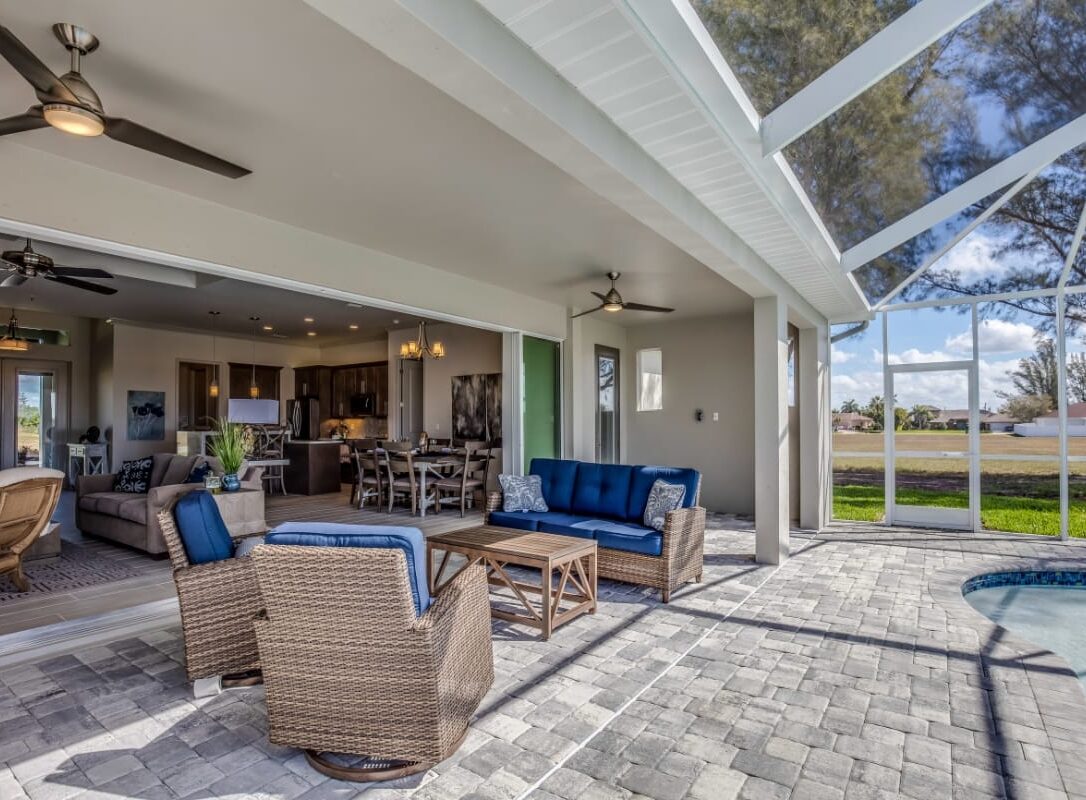Designing the perfect outdoor living space in Cobb County means more than just placing a few chairs on the patio—it’s about creating a backyard retreat that feels like an extension of your home. Whether you’re dreaming of cozy fire pit nights, shaded lounge areas, or a full outdoor kitchen, a well-planned space invites comfort, functionality, and year-round enjoyment. With Georgia’s mild climate, investing in your backyard not only boosts your lifestyle but also adds value to your home. In this guide, we’ll explore how to transform your outdoor area into a personal sanctuary tailored to your tastes and needs.
Outdoor Living Space Ideas That Add Style and Value
Evaluating Your Outdoor Space
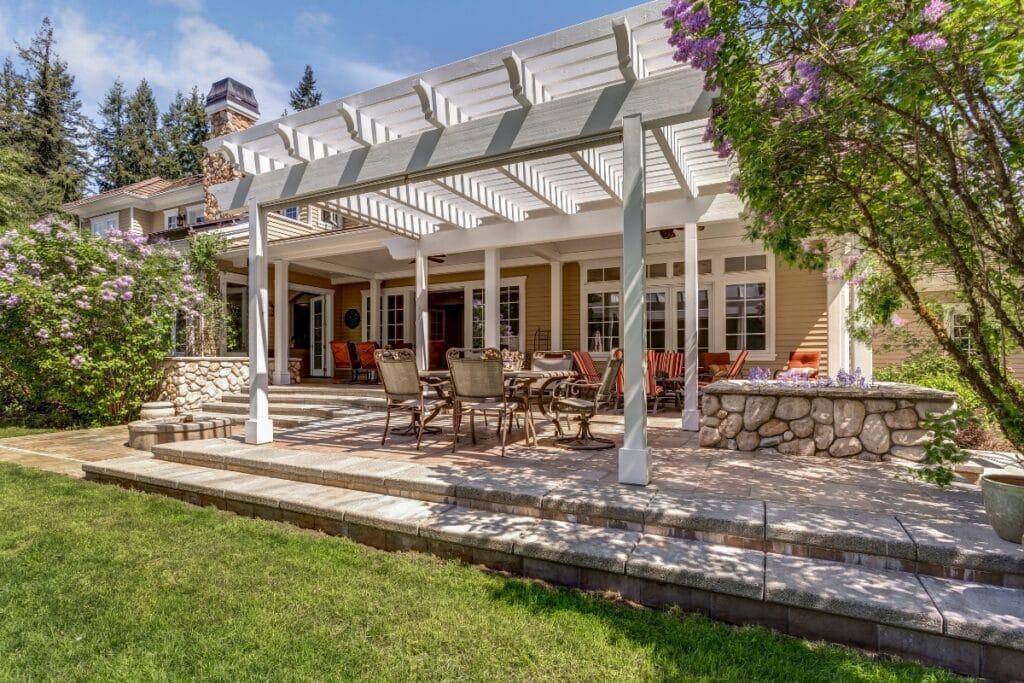
Before jumping into any backyard updates, it’s important to take a step back and assess what you already have. A good plan starts with knowing the layout, strengths, and problem areas of your yard.
Begin by measuring the total square footage of your outdoor space. Make note of existing features like patios, walkways, decks, fences, and any slopes or uneven ground. These elements will shape how you design and use the space. Pay close attention to how sunlight moves through the yard during the day. Morning sun and afternoon shade may be ideal for a seating area, while full sun spots are better for gardens or raised beds. Tracking sunlight patterns helps you figure out where to put plants, furniture, or even outdoor lighting.
Sketch out your yard using graph paper or a simple digital tool. It doesn’t have to be perfect—just enough to give you a visual layout to refer back to. Label different zones with notes about sun exposure, drainage, and existing structures.
Soil is another important factor. If you plan on adding new plants, it helps to know what you are working with. Is your soil sandy, full of clay, or somewhere in between? You can test it yourself or send a sample to your local extension office. Healthy soil supports better drainage and plant growth, while poor soil may need some work before you move forward with planting.
Also, keep an eye out for any problem areas. Watch for spots that stay soggy after rain, areas that seem to attract weeds, or places where water collects near your foundation. Fixing these issues before you build or plant will save you headaches later.
Finally, take stock of existing features that might be worth keeping or highlighting. Maybe you have a mature tree that provides great shade or a stone wall that adds character. These elements can serve as focal points in your new design and help tie everything together. By thoroughly evaluating your backyard first, you’ll set yourself up for a more successful, functional, and lasting outdoor space—one that works with your property instead of against it.
Setting Your Outdoor Living Goals

After taking stock of your backyard’s layout and conditions, the next step is to figure out exactly how you want to use the space. Start by thinking about your main goals. Are you looking for a quiet spot to relax, a space to host friends and family, or a backyard that supports hobbies like gardening or outdoor cooking?
Write down what you want most out of your outdoor area, and then rank those priorities. This step helps keep your budget and space focused on what really matters to you. For example, if entertaining is a top priority, you may want to dedicate more space to seating, outdoor dining, or a built-in grill setup. On the other hand, if privacy or calm is more important, then things like fencing, natural screens, or cozy corners for reading might take the lead.
Think about who will actually use the space and how often. A yard designed for weekend get-togethers looks different from one built for quiet evenings or everyday family use. If you have kids, safety might be a bigger focus—non-slip pavers, soft play areas, or fencing around certain zones. If you’re a gardener, you might want raised beds, compost bins, or storage areas for tools.
Also, consider the seasons. In Cobb County, summer heat can be intense, while spring and fall are more comfortable. Will you use the space all year or just part of the year? Shade structures like pergolas or umbrellas are helpful in hot months, while outdoor heaters or a fire pit can extend your use into cooler evenings. Choosing materials and furniture that can handle a range of weather conditions will also help everything last longer and require less upkeep.
Taking time to define your goals will make the design process much smoother. It gives you a clear sense of what you need versus what would just be nice to have. These early decisions shape how the space comes together and help avoid costly changes later on.
In the end, your outdoor living space should reflect how you live. By starting with clear goals, you’ll end up with a space that is both useful and enjoyable throughout the year.
Choosing the Right Plants and Greenery
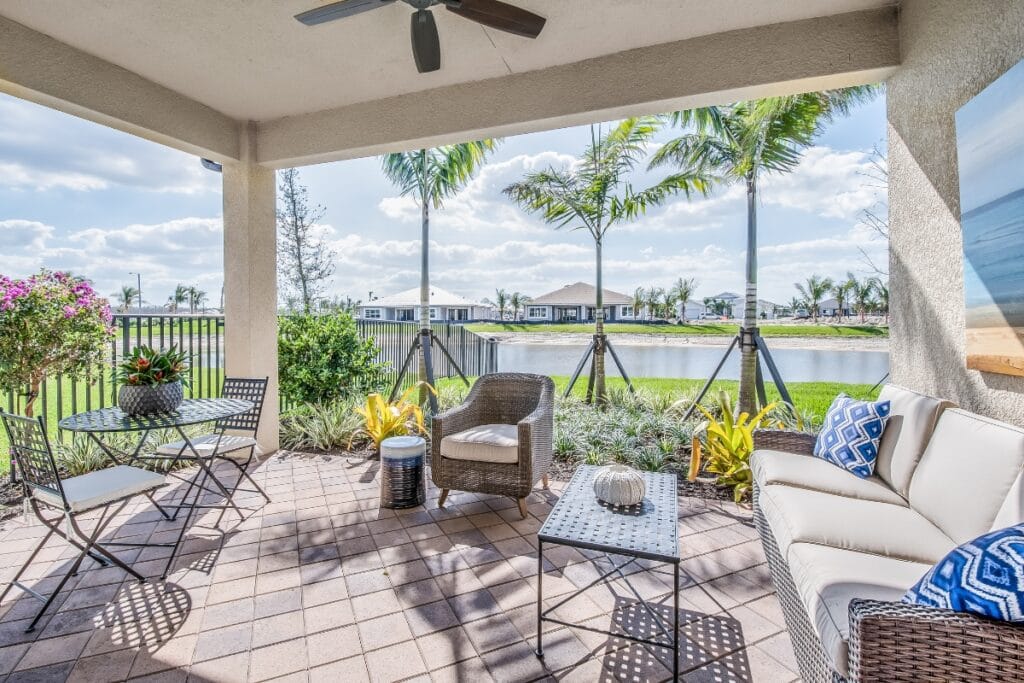
Plants play a major role in shaping how your outdoor space looks and feels. They add color, shade, texture, and even privacy. But before heading to the garden center, take some time to choose plants that will actually thrive in your yard.
Start by focusing on what works well in Cobb County’s climate. Native plants, drought-tolerant species, and perennials suited to Georgia’s hot summers and mild winters are good places to begin. These plants tend to need less maintenance and are more resistant to local pests and diseases. Also, pay attention to your yard’s sun and shade patterns. Group plants with similar sunlight and water needs together so they’re easier to care for and more likely to stay healthy.
Think about using different layers to give your landscape depth. Use taller plants like small trees or ornamental grasses along the back edges or near seating areas to create a natural frame. Mid-sized shrubs and flowering plants can fill in the space and provide seasonal color. For ground cover, choose low-growing plants to edge walkways or fill in open areas without relying too much on grass.
Evergreens are helpful for adding structure, especially in winter when many other plants lose their leaves. Mixing in deciduous plants provides variety and seasonal changes, which help your backyard stay interesting year-round. Don’t overlook vertical space. Trellises with climbing vines, hanging baskets, or even a simple wall-mounted planter can add greenery without taking up much room. These vertical elements work especially well in smaller yards or along fences and blank walls.
Also, consider how your plant choices will affect your outdoor living experience. Fragrant flowers near a patio can add to the atmosphere, while thorny or messy plants might be better placed away from walkways and seating areas. If you want to attract birds or pollinators, choose plants that offer food or shelter for local wildlife. The right mix of plants can make your yard feel inviting without requiring constant upkeep. By choosing carefully and placing plants where they can thrive, you’ll create a space that looks great and feels relaxing through every season.
Selecting Functional and Stylish Furniture
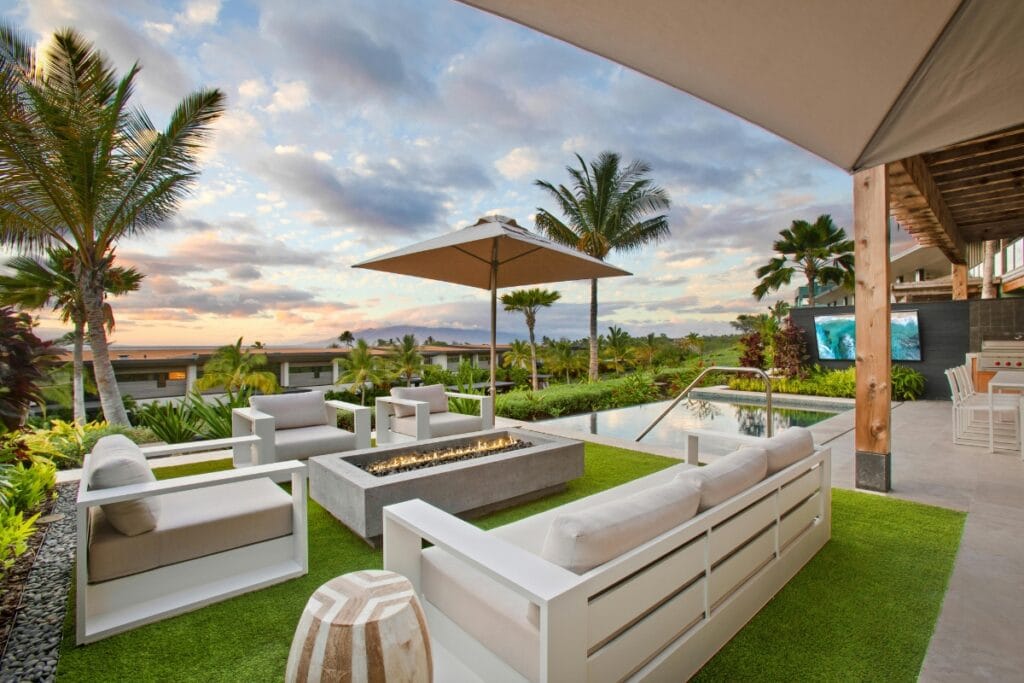
When choosing furniture for your outdoor space, comfort and practicality should come first—but that doesn’t mean you have to sacrifice style. The right setup can make your backyard feel like an extension of your home.
Start with materials that can handle the outdoors. In Cobb County, weather conditions like heat, humidity, and rain are common, so it is important to pick furniture built to last. Look for frames made from aluminum, teak, or weather-treated wood. These materials resist rust, warping, and fading. For cushions, go with quick-drying foam and fabrics labeled as UV- and mildew-resistant. This will save you from having to replace them every season.
Think about how you plan to use the space. If outdoor meals are a big part of your routine, place a dining table and chairs close to the kitchen or grill area for convenience. For relaxing, sectionals, lounge chairs, or a few Adirondack chairs can create a spot for reading, talking, or just enjoying the weather. If space is limited, consider benches with storage inside or nesting tables that can be tucked away when not in use. Small patios or balconies benefit from multi-use pieces. A foldable table can double as a prep surface and dining spot. Stackable chairs are easy to store when not in use. These details help make the most of tight spaces without making the area feel crowded.
Once you’ve picked your main pieces, add a few simple touches to tie everything together. Outdoor rugs help define areas, especially in open layouts. Side tables provide a place for drinks or books, and pillows or cushions can bring in color and texture. Just make sure these accessories are also designed for outdoor use so they hold up over time.
Stick with a consistent color scheme or material type to give the space a cohesive look. For example, if you have wood furniture, match it with earth-toned fabrics or metal accents that blend rather than compete. In the end, your outdoor furniture should match how you live. Choose pieces that are comfortable, easy to care for, and that work with your space. With a little planning, you can create a backyard that’s both useful and welcoming.
Incorporating Lighting Elements for Ambiance
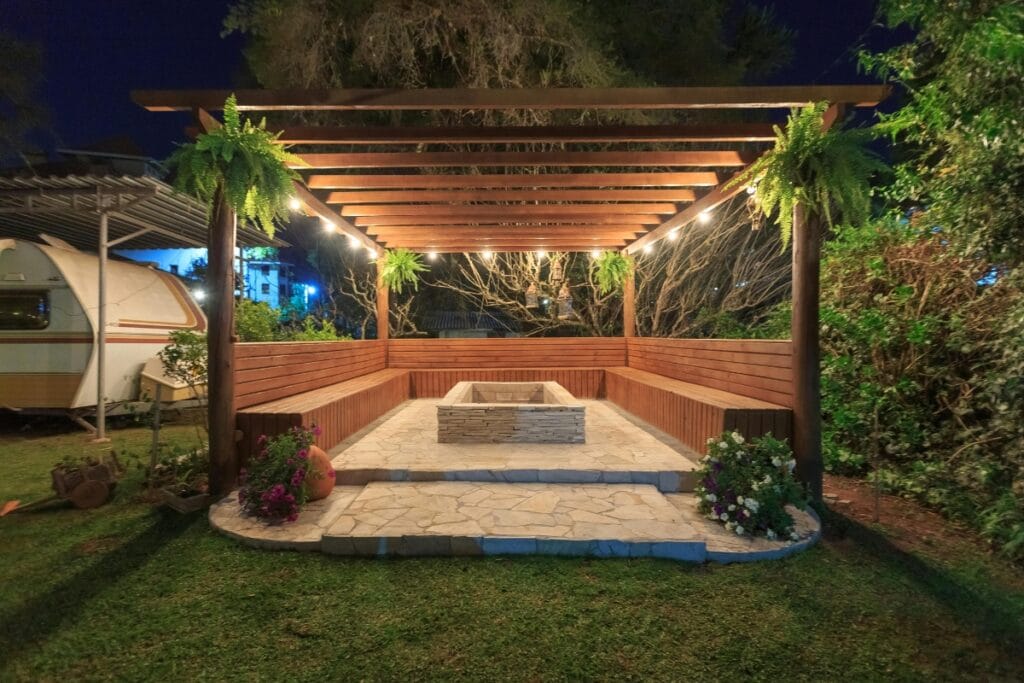
Outdoor lighting can do more than just help you see at night—it sets the tone for how your space feels after the sun goes down. A well-lit backyard extends your living space and makes it more usable, safe, and inviting in the evening.
Start with task lighting in the areas where visibility matters most. If you have a grill or outdoor kitchen, make sure that space is well-lit with overhead fixtures or wall-mounted lights. A dining table under a pergola or covered area benefits from pendant lights or downlights mounted to beams. These fixtures help you prep food, serve meals, and move around safely after dark.
Once your main areas are covered, layer in ambient and accent lighting to bring character to the space. Pathway lights are a simple way to guide people through your yard and reduce the risk of tripping. They can also help define different zones, like walkways between a patio and garden.
Accent lighting adds depth and interest. Small spotlights aimed at trees, shrubs, or water features can create dramatic shadows and make those elements stand out at night. Uplights placed near fences, stone walls, or large plants also help show off textures and can make the space feel larger after dark.
String lights are a popular choice for a reason. They are easy to install and instantly add a cozy, casual vibe. You can hang them overhead, run them along a railing, or weave them through pergola beams. Solar lanterns and battery-powered LED candles are also a great addition for softer, flickering light. They are easy to move around and require no wiring.
Make sure the lighting setup is balanced—not too bright in one area and dark in another. Use warm white tones rather than harsh blue light to keep the atmosphere comfortable and inviting. With the right mix of task, ambient, and accent lighting, your outdoor space can be just as functional and enjoyable at night as it is during the day. A thoughtful lighting plan allows you to host, relax, or simply unwind outside, long after the sun has set.
Adding Water Features for Relaxation
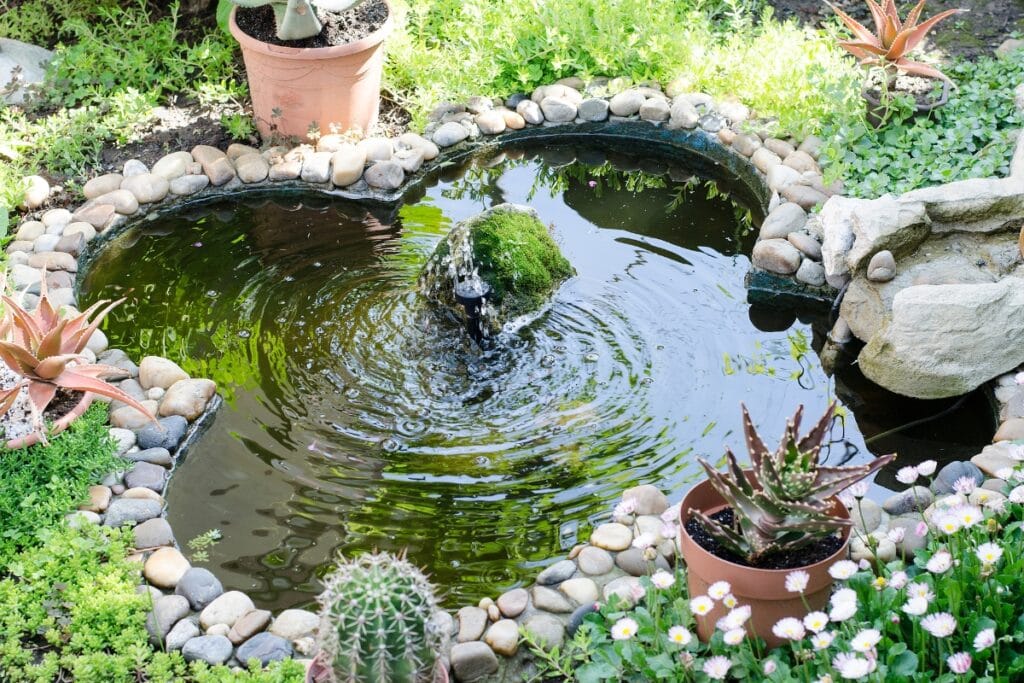
Adding a water feature is one of the easiest ways to bring a calming element to your outdoor space. The sound of running water can help block out background noise, reduce stress, and create a more peaceful atmosphere. You do not need a large yard or complex system to enjoy these benefits—there are options for every size and budget.
If space is limited, start small. A tabletop fountain can sit on your patio table or outdoor shelf and requires nothing more than a nearby outlet. Wall-mounted fountains are another compact option. These can be attached to fences or exterior walls and offer a continuous, low-maintenance water flow. Freestanding ceramic or stone fountains with built-in pumps are also popular for small patios and entryways. They are easy to install and don’t require any major plumbing or digging.
If you have more room and want a larger feature, consider a pondless waterfall. This design allows water to flow over rocks and then disappear into a hidden underground basin, where it is recirculated. It gives the look and sound of a waterfall without the upkeep of a pond. Since there is no standing water, it also reduces the risk of algae growth and mosquito activity.
For a more classic look, a small koi pond or reflecting pool can add beauty and depth to your landscaping. These features create a quiet focal point, but they come with more responsibility. If you go this route, be prepared for regular cleaning and maintenance. You will also want to consider safety if you have young children or pets.
Water features can be tucked into garden beds, placed near seating areas, or used to divide spaces within your yard. Just make sure they are installed on level ground and near a power source if a pump is required. Choose natural materials like stone or ceramic to blend with the rest of your outdoor design.
No matter which type you choose, the addition of a water feature can instantly make your backyard feel more relaxing and complete. It creates a peaceful spot where you can unwind, enjoy nature, or simply sit and listen to the calming sound of moving water.
Creating Gathering Spaces for Entertaining
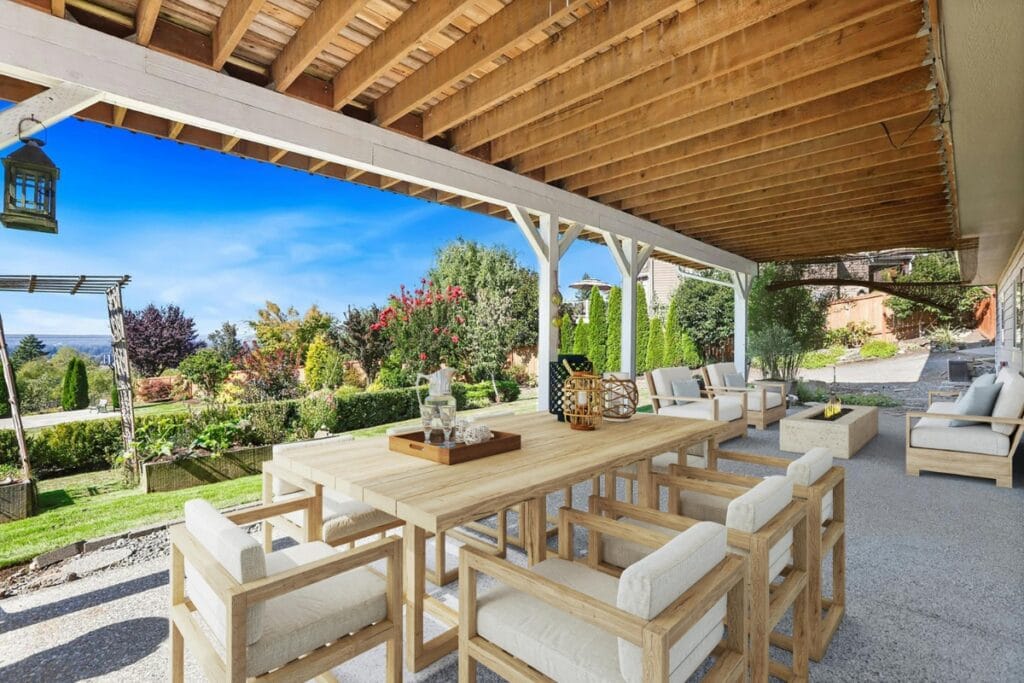
A well-planned outdoor space makes it easier to host and connect with others. Whether you’re cooking for a crowd or relaxing with a few friends, setting up specific areas for different activities helps the space feel organized and inviting.
Start by dividing your yard into zones based on how you plan to use it. A cooking area with a grill or bar setup keeps food prep in one spot. A dining area with a table and chairs provides space for meals, while a separate lounge zone gives people a place to sit back and talk. These areas can be open to one another, but they should each serve a clear purpose.
Furnish each zone with intention. In the cooking area, a built-in grill or outdoor kitchen with counter space gives you room to prep and serve while staying part of the conversation. A bar-height counter with stools also creates a casual gathering spot. For the dining area, choose a table large enough to fit your usual group, with room to expand if needed. A simple umbrella or pergola can offer shade and help define the space.
The lounge area is all about comfort. Arrange outdoor sofas, chairs, or even Adirondack seats around a fire pit or outdoor fireplace. A circular or semi-circular layout encourages conversation. Include side tables or a coffee table so guests have a spot to place drinks or snacks. Add portable pieces like ottomans or extra stools to adjust the space for larger gatherings. Lighting also plays a role. Use string lights, lanterns, or pathway lights to make the space usable after dark. This not only helps with visibility but also adds a relaxed atmosphere.
Make sure there are clear walkways between each zone so people can move around without cutting through conversations or food prep areas. If your yard is small, consider using rugs or planters to define zones without physical barriers. With a little planning, your outdoor space can become the perfect setting for anything from weekend barbecues to quiet evenings by the fire. Creating distinct areas for different activities helps everyone feel comfortable and makes your backyard more functional year-round.
Personalizing with Decor and Accessories
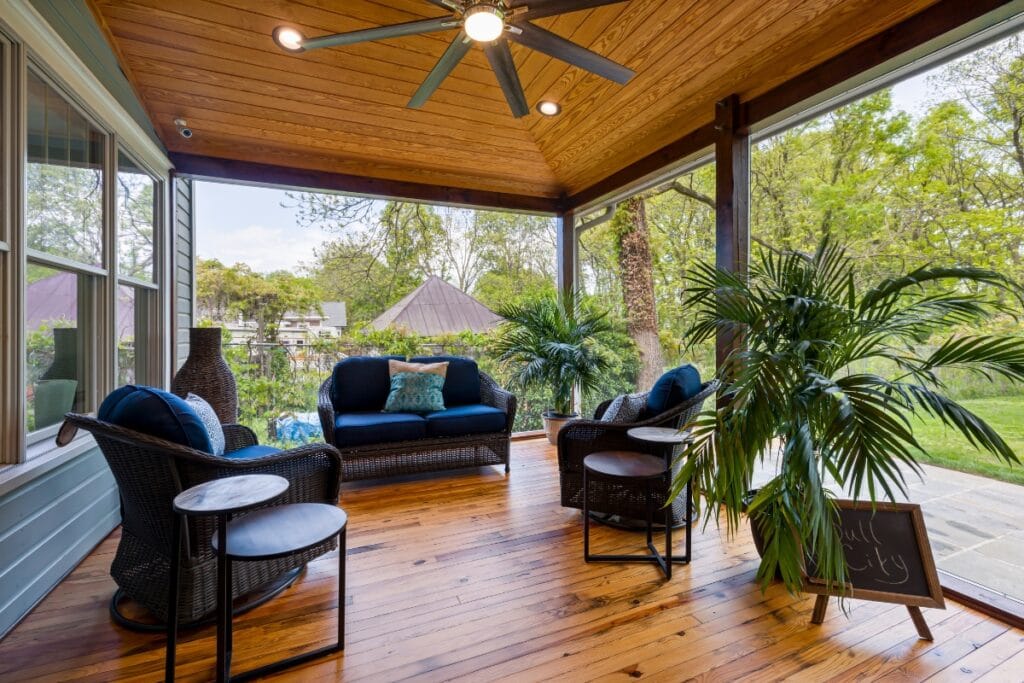
Decor and accessories are what turn a basic backyard setup into a space that feels like yours. These small details make the area more comfortable, functional, and reflective of your personal style.
Start with an outdoor rug. It helps define the seating area and adds color or texture underfoot. Choose one that’s made for outdoor use so it can handle sun, rain, and foot traffic. From there, add pillows and throw blankets in durable, weather-resistant fabrics. These soft touches make outdoor furniture more inviting and help the space feel like a natural extension of your home.
Mix in different materials to add interest. Woven baskets can hold blankets or toys. Ceramic pots in different sizes are great for plants and also work as decorative pieces. Lanterns, either solar-powered or candle-lit, bring in warm lighting and help set the mood after sunset.
Decorative items like sculptures, wall hangings, or wind chimes let you add your own personality to the space. If you have a bare fence or blank wall, consider creating a simple gallery with weatherproof artwork or mounting a few hanging planters to bring greenery up to eye level. These small changes can make a big visual impact without much effort.
Lighting plays a big role in making the space usable at night and adding ambiance. String lights are easy to install and instantly make the area feel more welcoming. You can also place LED candles on tables or hang solar lanterns in trees or along pathways.
Don’t forget about function. Storage boxes that double as side tables give you a place to stash cushions, games, or garden tools. A simple tray on the table helps keep snacks, drinks, or citronella candles in one spot and makes cleanup easier.
You don’t need to over-decorate. A few well-chosen accessories can go a long way in making your backyard feel complete. Focus on items that are both useful and reflective of your taste. By layering in pieces that match your style and meet your needs, you can turn a plain outdoor space into a comfortable and personalized place to relax, entertain, and enjoy the outdoors.
Maintaining Your Outdoor Retreat
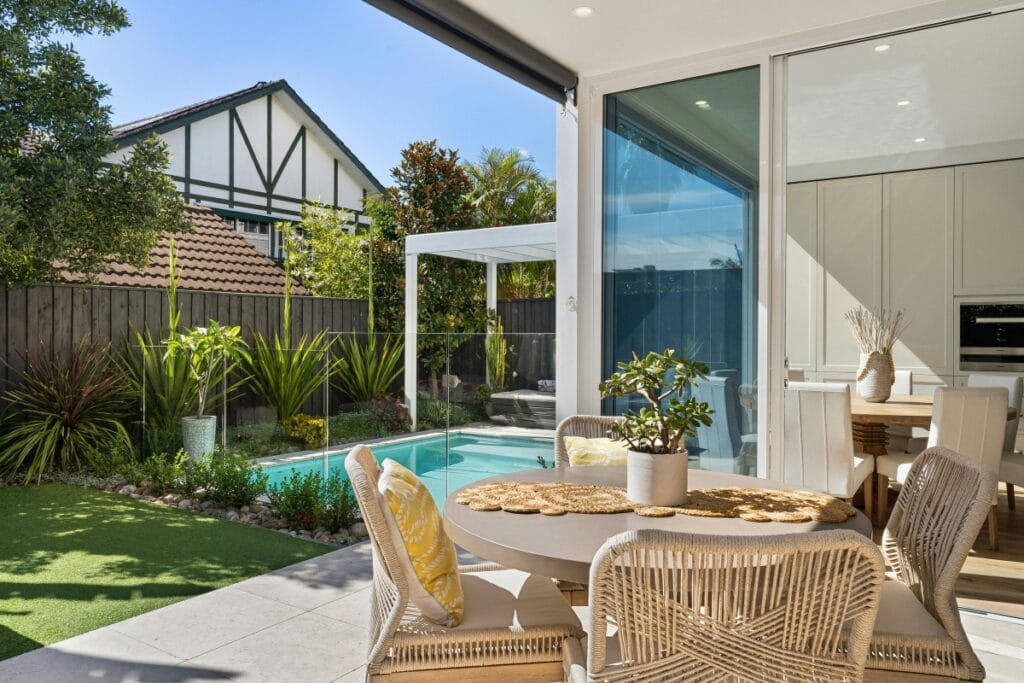
A well-designed backyard only stays enjoyable if you keep up with basic maintenance. Regular care helps everything—from plants to furniture—last longer and look better throughout the year. Start with seasonal cleanups. In the fall, clear out fallen leaves and cut back dead plant material. In the spring, remove any winter debris and check for damage from cold or storms. Sweeping patios, decks, and walkways helps keep the area tidy and prevents dirt from building up in cracks or between pavers.
It’s also a good idea to power-wash hard surfaces like concrete, stone, or wood decks once or twice a year. This removes grime, mildew, and stains that can make outdoor areas look dull. Patio furniture benefits from the same treatment. Give chairs, tables, and cushions a regular wipe-down, and deep clean them as needed. If you use an irrigation system, inspect it every few months. Look for clogged or broken sprinkler heads and check for leaks. As your plants grow or the weather shifts, adjust the watering schedule to avoid overwatering or underwatering.
Protect outdoor furniture by covering it when not in use, especially during long stretches of rain or in the off-season. Store cushions indoors or in a weatherproof storage box to help them last longer. For wood or stone features, reapply sealant every year or two to help guard against moisture damage and fading from the sun.
Pruning trees and shrubs keeps them healthy and prevents overgrowth around seating areas, walkways, or your house. It also helps improve airflow and reduces the risk of falling limbs during storms. Keep an eye out for pests. Holes in leaves, sticky residue, or stunted growth can be signs of insects or disease. Address issues early before they spread or cause long-term damage.
Good maintenance doesn’t have to be time-consuming. A few simple tasks each month go a long way in keeping your outdoor space looking great and functioning properly. By staying on top of the basics, you’ll keep your backyard retreat clean, safe, and ready to enjoy any time of year—whether you’re hosting friends or just stepping outside for a quiet moment.
Conclusion: Enjoying Your Perfect Backyard Retreat
Crafting the perfect backyard retreat in Cobb County means blending functionality with style—think cozy seating areas, ambient lighting, and lush landscaping that invite relaxation and entertaining. With Legacy Landscape Design, you’ll collaborate with seasoned landscaping professionals who turn your vision into an outdoor oasis tailored to your lifestyle. Call us at 770-427-2026 or fill out the form on our website to start planning your dream living space today!
